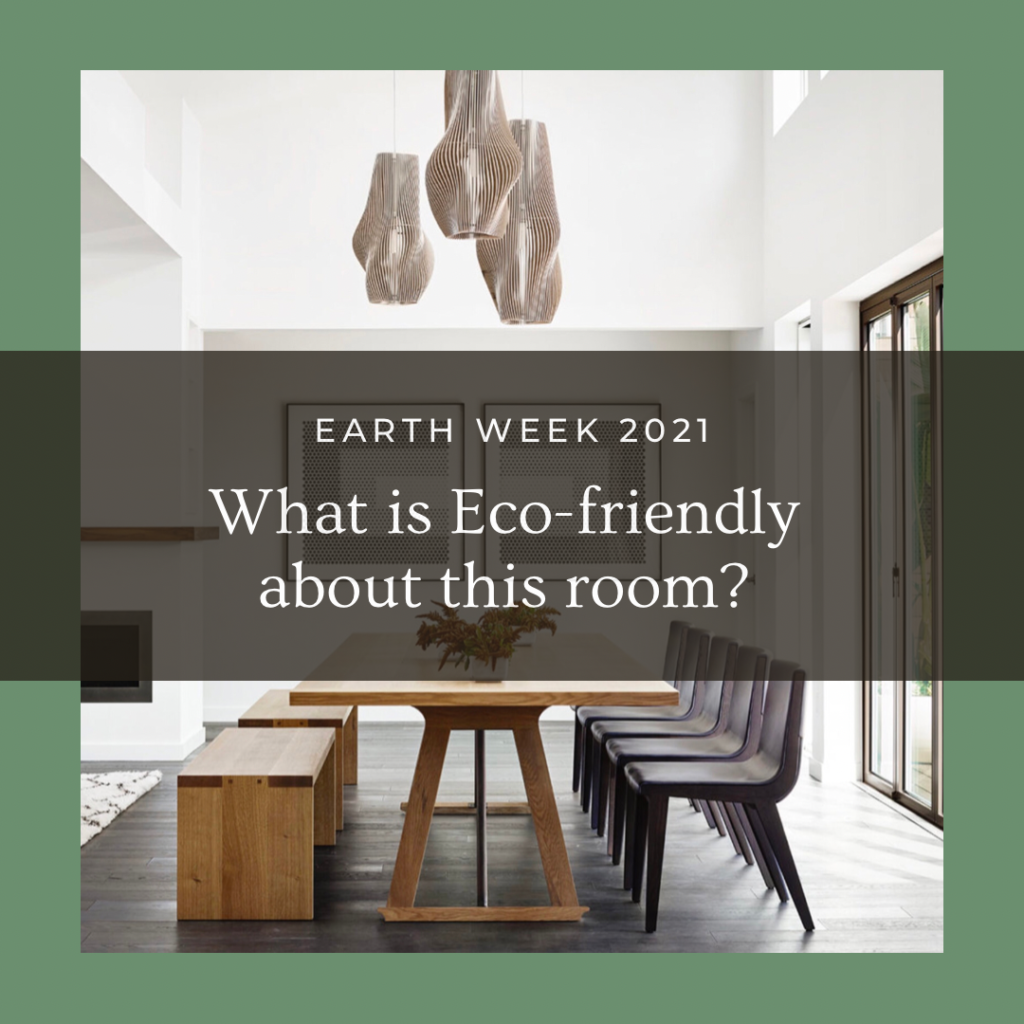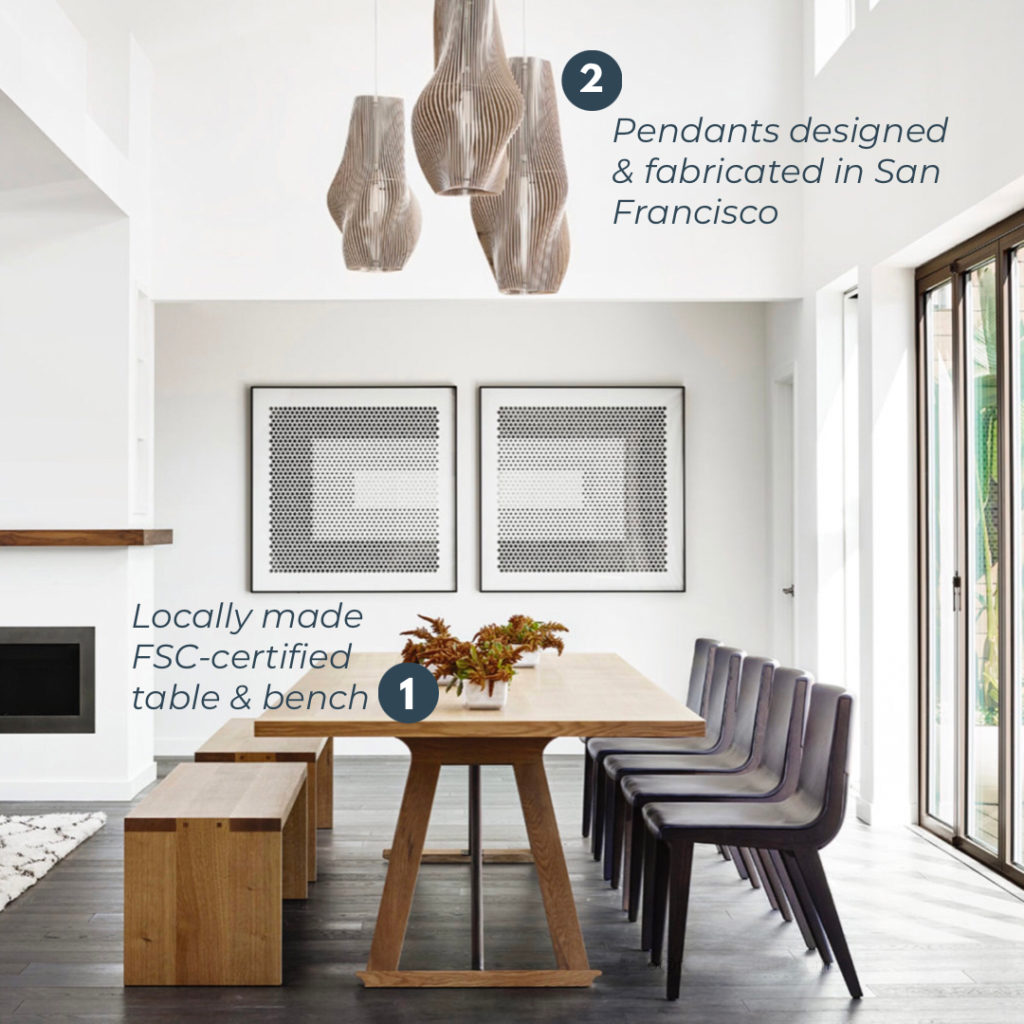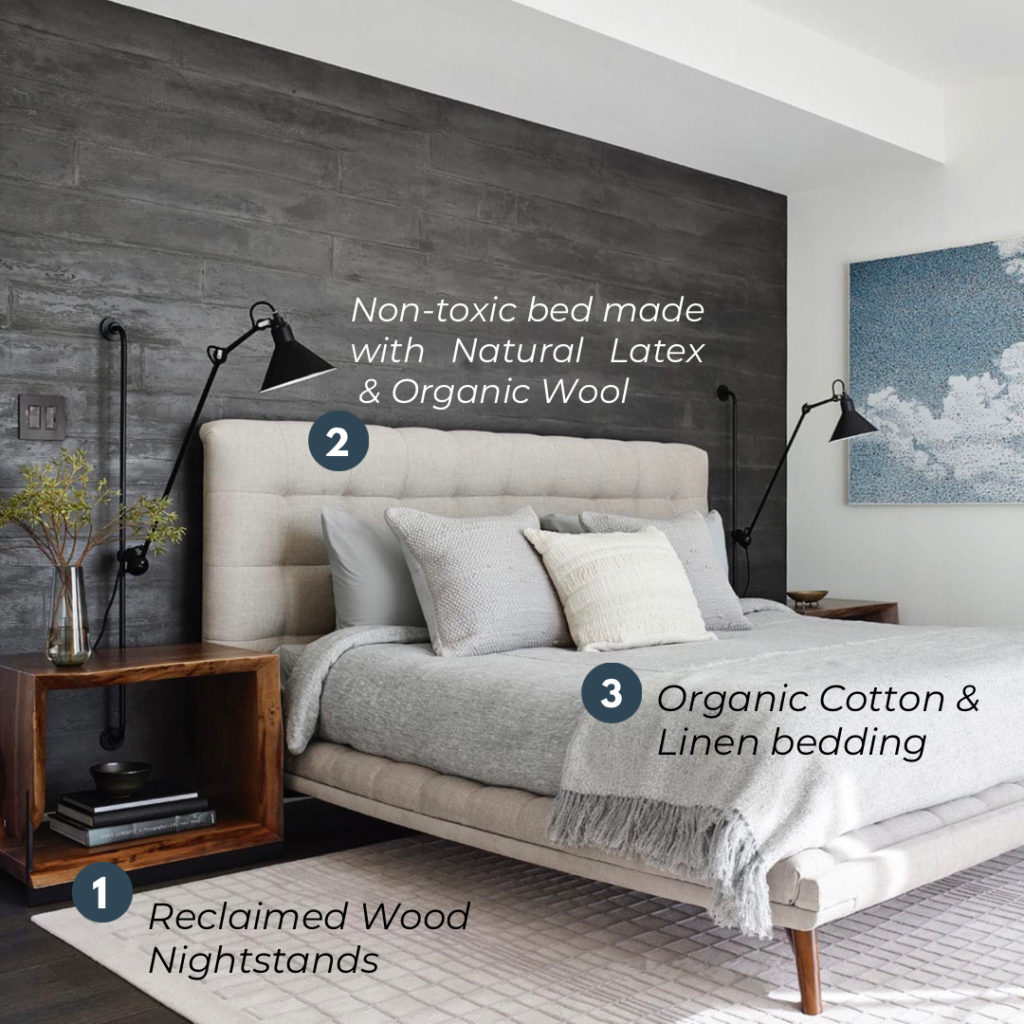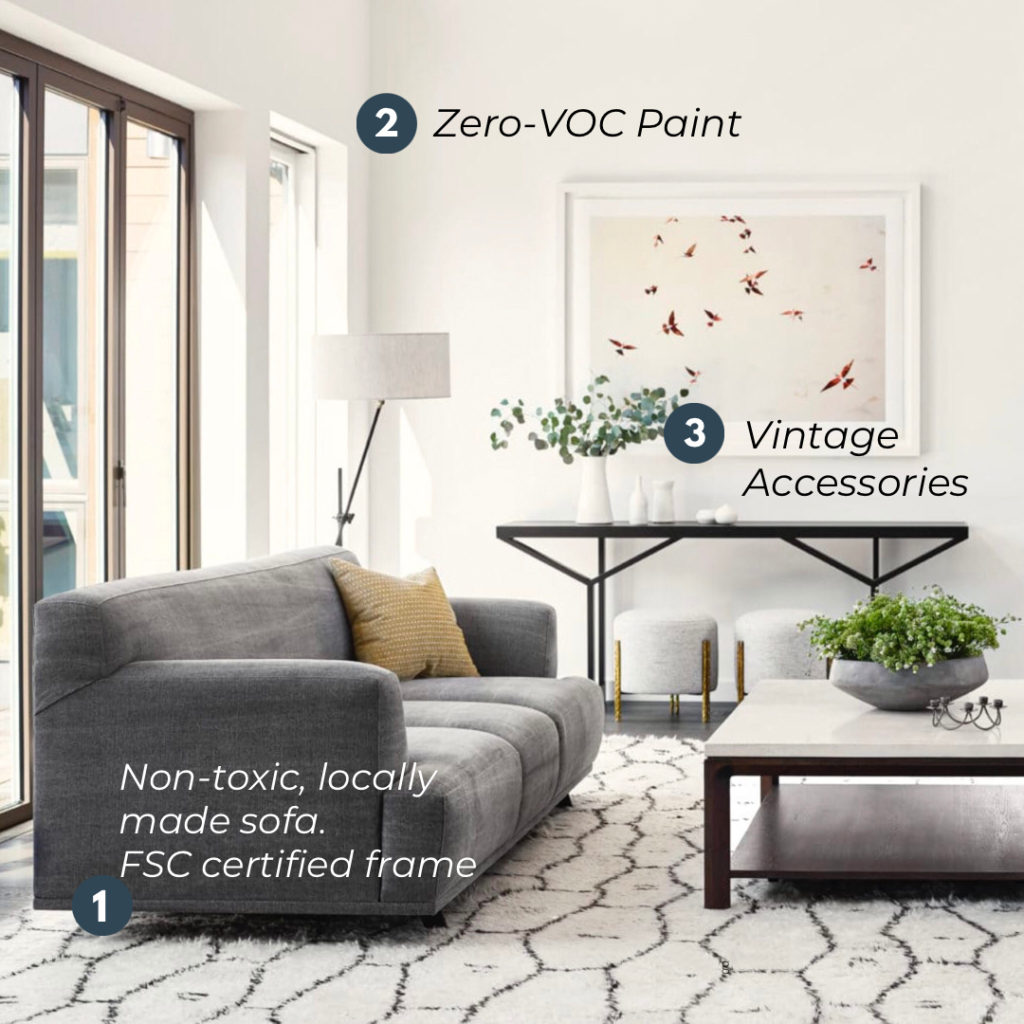Sustainable Interior Design Tips for Your California Home
Happy Earth Week! Our San Francisco interior design team wanted to celebrate by sharing a close-up look at the sustainable design choices in our residential projects throughout the San Francisco Bay Area and Napa Valley. From specifying FSC certified wood to Zero-VOC paints, we share a variety of ways to make your home more eco-friendly and healthy.

We decided to use one of our most eco-friendly homes, the Napa Wine Country Retreat, as a case study, illustrating the green choices made in three main rooms of this Napa home – the dining room, primary bedroom and living room. This prefab Wine Country home already had a jump start on the sustainability scale, as prefab homes greatly reduce the amount of construction waste compared to traditionally built homes. Pre-fabricated homes, also known as prefab homes, are becoming increasingly popular due to their many benefits, including their environmental friendliness. Compared to traditional construction methods, pre-fabricated homes have a significantly lower environmental impact, making them a more sustainable and eco-friendly option.
Sustainable Features of Pre-fab Homes
One of the main reasons why pre-fabricated homes are more environmentally friendly is that they produce less waste. The majority of pre-fabricated homes are built in a factory, where materials are carefully measured and cut to the exact specifications needed for each individual component. This precision means that there is much less waste generated during the construction process compared to on-site construction. Furthermore, any waste generated during the pre-fabrication process can be recycled or reused, reducing the overall impact on the environment.
Another environmental benefit of pre-fabricated homes is that they are designed to be energy-efficient. Many pre-fabricated homes are built with high-quality insulation, energy-efficient windows, and other features that help to reduce energy consumption. This means that homeowners can save money on their utility bills while also reducing their carbon footprint.
Additionally, pre-fabricated homes are often constructed with sustainable materials, such as renewable timber, recycled steel, or eco-friendly insulation. These materials are carefully selected for their low environmental impact and are often sourced locally, reducing the carbon footprint associated with transportation.

Napa Vacation Home Designed by Niche Interiors
Our clients wanted a large dining table to host big gatherings of family and friends. We designed this oversized custom dining table and coordinating benches and commissioned our local San Francisco fabricator to make them. Both the table and benches are made of FSC Certified wood, which ensures that wood comes from responsibly managed forests that provide environmental, social and economic benefits. The bentwood pendants were designed and fabricated by local San Francisco studio Path Design. Sourcing furnishings locally reduces the carbon footprint of each item and helps support local Bay Area designers and fabricators – win, win!

We created a wabi-sabi retreat in the primary bedroom, with a mix of natural textures and organic materials. The custom plaster wall treatment behind the bed was designed to mimic the look of shou sugi ban – the Japanese art of charred cedar. Unfortunately, using charred wood inside a home is not the healthiest choice for indoor air quality, so we enlisted our local plaster artist to create a similar aesthetic using a non-toxic plaster treatment. The nightstands are made from reclaimed wood, which is the most sustainable type of wood aside from FSC certified wood or other sustainably harvested wood. To learn more about the sustainability of wood furniture at various retailers check out the Sustainable Furnishings Council Wood Scorecard.
The custom bed contains no harmful flame retardant chemicals, which are typically found in standard poly foam. We specified natural latex foam wrapped in organic wool and used a cotton blend fabric for the upholstery and commissioned our San Francisco workroom to fabricate the bed. We opted for a handmade rug made from 100% wool – the most durable and easy to clean choice for rugs. Not only is this a natural product, its inherent durability ensures that the rug will last for many years and avoid a premature trip to a landfill.
Environmental Benefits of Organic Textiles
The bedding is a mix of organic cotton and linen, adding additional layers of texture and softness to the space. Organic cotton and linen are grown without the use of toxic and persistent pesticides and synthetic fertilizers. By purchasing organic textiles you can help conserve water, support biodiversity and healthy soils, and eliminate hazardous toxic pesticides from our environment. Organic cotton, for example, is grown without the use of synthetic pesticides, herbicides, or genetically modified seeds, which can have harmful effects on the environment, including soil contamination, water pollution, and damage to local ecosystems. Here are some of the ways in which organic textiles are better for the environment:
• Reduced use of harmful chemicals: Organic textiles are grown using natural and sustainable methods, without the use of harmful chemicals. This reduces the amount of pollution that enters the environment, including waterways and soil, and helps to protect local wildlife and ecosystems.
• Improved soil health: Organic farming practices focus on maintaining and improving soil health through the use of natural fertilizers and crop rotation. This helps to maintain the natural balance of nutrients in the soil, which in turn helps to produce healthy crops and maintain biodiversity.
• Water conservation: Organic farming methods often use less water than conventional farming methods. This is because organic crops are often grown using rainwater, and the use of natural fertilizers can improve soil moisture retention, reducing the need for irrigation.
• Reduced carbon footprint: Organic textiles are often produced locally, which reduces the carbon footprint associated with transportation. Additionally, organic farming practices can help to sequester carbon in the soil, reducing greenhouse gas emissions.
• Safer working conditions: Organic farming practices often involve fewer dangerous chemicals and pesticides, which can reduce the risk of illness or injury for workers on the farm. This can lead to better working conditions and improved livelihoods for farmers and their families.

The living room features two custom, non-toxic sofas which were fabricated locally in San Francisco using FSC certified wood frames and natural latex wrapped in organic wool. Zero-VOC paint was used throughout the home to ensure healthy indoor air quality. Volatile organic compounds (VOCs) are emitted as gases from certain solids or liquids. VOCs include a variety of chemicals, some of which may have short and long-term adverse health effects. Exposure to VOCs can cause respiratory problems, headaches, dizziness, and nausea, and can exacerbate existing conditions such as asthma or allergies. Long-term exposure to VOCs has also been linked to more serious health issues, such as liver and kidney damage, cancer, and nervous system damage. VOCs are particularly harmful to children, as their bodies are still developing and they breathe in more air per pound of body weight than adults. To reduce the risk of health problems associated with VOCs, it is important to choose low-VOC or VOC-free paints and other household products, and to ensure that indoor spaces are well-ventilated when using these products. Fortunately, most interior paints sold now are low or zero-VOC, but you should always inquire before purchasing.
Incorporating vintage furniture and accessories is one of our favorite ways to re-use products while adding personality to a home at the same time! We paired a collection of vintage ceramics on the console table with a photograph that the clients purchased from their travels abroad.
Head to our Green page for more eco-friendly home tips!
